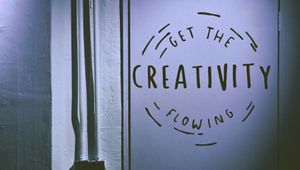
What is Real?

Shifts in television content, the explosion of non-fiction programming at the beginning of the century, an increase of UGC and influencer platforms, and perhaps the war on truth have caused American audiences to crave real stories more than ever before. That quest has also permeated advertising. Maybe it’s because you can’t argue with efficacy. According to numerous stats, customers trust a brand and are more likely to purchase a product after watching positive video testimonials. People want the real thing. Kinda.
I’m both a director and editor and have been exposed to numerous techniques in both the scripted and non-scripted world. One of my favourite challenges was a feature I produced called Centigrade.
The movie is based on real events and is about a couple trapped in their car during a blizzard. To achieve reality, we drove two cars into an ice cream freezer. Not only were the actors actually freezing during a New York summer heat wave, but the crew was equally miserable, which came across on screen perfectly. We decided to shoot four days a week so the production days literally aligned with the fictional timeline. The actors loved it. They went for it. Starved themselves. Worked out on the days off. By the end of the movie, they lost fifteen pounds, which you could see on screen. At the end of the day, the movie feels real. So real, that people with claustrophobia can’t watch it. Maybe it’s too real. How much do we need to see these days to be brought into a story? Must it be graphic or emotionally draining to resonate? Are we voyeurs grappling with our own mortality?
This example might seem a step removed from advertising, but on a smaller scale, I’ve encountered similar questions around reality in the ad industry. On almost every briefing call, the two adjectives that come up are real and aspirational. The process is anything but real, and it often involves actors trying to achieve real or non-actors trying to tap into some special charisma. I’ve come to the conclusion that there is a fine line where extraordinary meets relatable, and that gold can be hard to mine.
In the ad world, I often hire people who really own the car we’re shooting or are passionate about the product we’re advertising. When we needed extras to play diabetes patients, we used actors who all had diabetes. Our b-roll contained voluntary finger pricks as everyone on set had real conversations about their experience. We hired a real quilt club for a comedy spot we did, and they came with the most amazing quilts and quilting vests, which I didn’t even know was a thing. Even in the advertising world, in order for things to feel real [as real as clients request them], we have to find a way for action to play out naturally. And yet, I know that somehow the real stuff is not what the cut will be about. I screened over 800 hours of footage for the documentary Carteland.
A lot of reality just doesn’t make the cut. Even with all of the real scenarios we set up, I know I’ll also find myself pushing for something that goes beyond the real thing. For all the talk, we want more than real, which is a conundrum.
This is why we’re always pushing to keep the camera rolling to find the unexpected moments in between or to pull something additional out of our subjects, however anecdotal, that is unique or a little larger than life in the story we’re telling. Sometimes, it’s my job to elicit tears from our subject (yeah, I get to be that guy). That’s because when we hit the edit room, there is often a discovery that real is too real. Real can also mean unattractive, boring, graphic or any number of things that don’t really play for a crowd. It might seem like a silly thing to fixate on, but I’m sure I’m not alone in the task to find that perfect balance of reality pushed to its edge, and to interpret the spectrum of that request. Whenever we get this directive, my EP and I probe and do some interpreting, and maybe in the future, we’ll share this article as we turn the reality dial.
I’d like to think that I’ve been doing this long enough to ultimately arrive at the point each client needs us to be at. I do feel lucky that I’m also an editor. I work the story from both directions – and thank goodness for those opportunities. My solution, for now, is to keep pushing for extraordinary stories – real but heightened – and to find the emotion and energy in the edit that balances both the desire to be real and also to aspire. One part spelunking and one part curating. Perhaps we don’t really want our stories to be real after all? It’s quite a riddle to solve. Maybe AI can figure it out. That would certainly be ironic, but I doubt it.
Bradley J. Ross is founder, director and editor at Open Swim.















